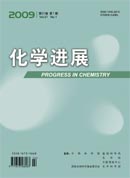Liu Li Wang Dong. Organic Reactions "on Water"[J]. Progress in Chemistry, 2010, 22(07): 1233-1241.
The development of “on water” organic reaction is a breakthrough in the field of aqueous organic reactions for green synthesis. An essential characteristic of “on water” reaction is heterogeneity of the reaction system. Water is not only used as a green reaction media, but also, in most “on water” reactions, plays a crucial role in observing large rate acceleration and selectivity enhancement. Under “on water” reaction conditions, the reaction can be scaled-up and the procedure is favorable to make a clear phase separation. The recent advancements of “on water”organic reaction and its applications in green organic synthesis are reviewed in terms of classification of organic reaction.
Contents
1 Introduction
2 Cycloaddition reaction on water
3 Nucleophilic addition reaction on water
3.1 Conjugate addition
3.2 Nucleophilic addition to carbonyl groups
3.3 Au-catalyzed tandem reaction
3.4 Enantioselective direct aldol reaction
4 Nucleophilic substitution reaction on water
5 Coupling reaction on water
5.1 Transition metal-catalyzed coupling reaction
5.2 Dehydrogenative coupling reaction
6 Oxidation on water
7 Bromination reaction on water
8 Theoretical studies
9 Conclusion








